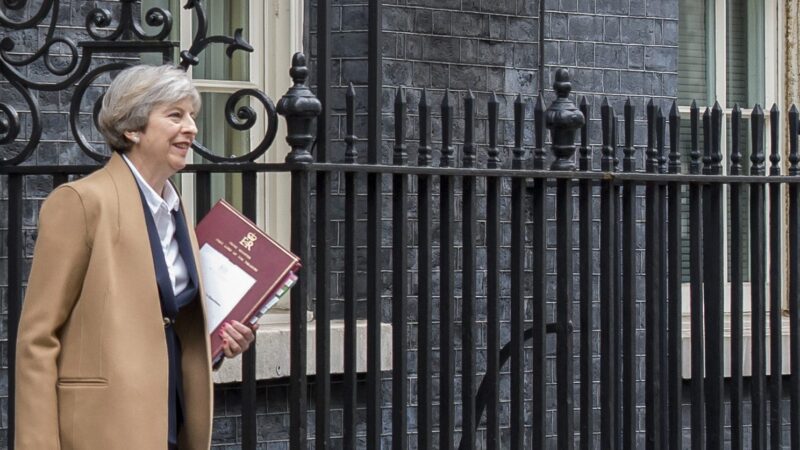Which way does May go? What she decides to do when her deal fails will have a significant impact on Brexit

Cowed and weakened after the events of the past few months, Theresa May will nevertheless stagger into the New Year as Prime Minister of the UK. And what she does between now and 17th (or possibly 21st) January will shape the path of Brexit – whether we like it or not.
Before I explain what those decisions are, it must first be underlined how much the Brexit deal on the table since the 25th November European Council is Theresa May’s Brexit – restricting freedom of movement of people has been a red line for her, more than it has been for the rest of the Tories. She indeed intervened personally in negotiations about this matter. With that in mind she has then sought a relationship that is as close as possible – economically – with the EU, while being outside the Customs Union and the Single Market. Unity of the UK – and protecting Northern Ireland’s place within the UK – has also been a central feature of May’s Brexit.
This is not a Brexit. This is Theresa May’s Brexit.
But then we come to the Meaningful Vote.
Due on 12th December, May was facing a major defeat, and she pulled the vote. She is due to try again in the week commencing 14th January, meaning the vote should now happen by 17th January. In the meantime she has tried buying off some sceptics with knighthoods, and somehow has even turned Jacob Rees Mogg.
But the essence is still this: there is no majority in the House of Commons for May’s Brexit Deal. There is no deal on offer that can win the support of all the Tories, and the DUP. Or a deal that can somehow win support of enough Labour MPs to make up for the Tory ones not backing it. May, right now, might not be on to lose the vote by as much as would have been the case on 12th December, but she is still odds-on to lose it by a large margin.
What does she do?
The first, and less significant, question is whether the Meaningful Vote happens in the week commencing 14th January, or is pulled again? Even if she pulls it, the government still has to put a plan to Parliament as to how it proposes to proceed by 21st January. With a vote pulled again, and no plan that can command a majority in sight, that would surely lead to a No Confidence Vote in the Government (I make no judgment here if that would succeed or not). As I see it, pulling the vote again can win May a week or so of respite, but no more.
Which brings us to the significant question.
When it is clear there is no majority for her deal, what does May herself opt to do?
She has two options, essentially. She can abandon her deal and lead the government towards No Deal Brexit, the default outcome of the Article 50 process, and seek to lessen the damage that would cause. Or, lacking support for her deal in Parliament, could come around to the idea of a People’s Vote on her deal versus Remain, as the only way of saving her Brexit variant.
I cannot see May opting for any other route – to ask the EU to extend Article 50, to rescind Article 50, to go for a Norway option (due to her red lines on freedom of movement), or to seek a deeper collaboration with Labour (reasons why this is out are here).
Plus the atmosphere in the House of Commons in mid-December was febrile enough – it will be worse still in mid January. So just waiting until panic sets in, and everyone comes round to her deal, cannot easily happen either.
Of the two options – aim for No Deal, or go for a referendum on her deal – the former is more likely in my view. But there are at least 5 members of her Cabinet – Lidington, Hammond, Gauke, Clark and Rudd – dead set against a No Deal route. Hancock, Hinds, Mundell, Brokenshire and Wright are borderline too I think. So how many Cabinet resignations could May survive? And then surely if she went for No Deal, a No Confidence vote in the government would have to happen – Labour could not avoid calling it then, even with Corbyn as leader.
Or May could try the most audacious tactical U-Turn, and call for a referendum as the only way of saving her Brexit deal. Parliament will not back it, but perhaps the people will, would be May’s rationale – if you listen to her speeches she actually has real conviction that her Brexit is really the Brexit the people wanted in 2016. Providing Remain was the other option on the ballot paper, there would be enough MPs willing to back this immediately to get May’s Deal plus a referendum through a Meaningful Vote in the Commons. This route would also cause chaos – but more on the Tory benches than the Labour ones, and Brexit hard liners would likely also resign – Fox, Mordaunt, perhaps Williamson and Barclay. Labour would not bring a No Confidence vote against the government in such circumstances, and the Tory hardliners could not do that in their party – as May is safe for a year after December’s failed bid to oust her.
Oddly, May’s short term future would be safer if she went for a referendum than if she went for a No Deal Brexit.
Weakened and down, but not yet out, what May chooses to do over the next three weeks will have a major impact on what Brexit Britain gets, or indeed whether there is even a Brexit at all.
Which way will she go?